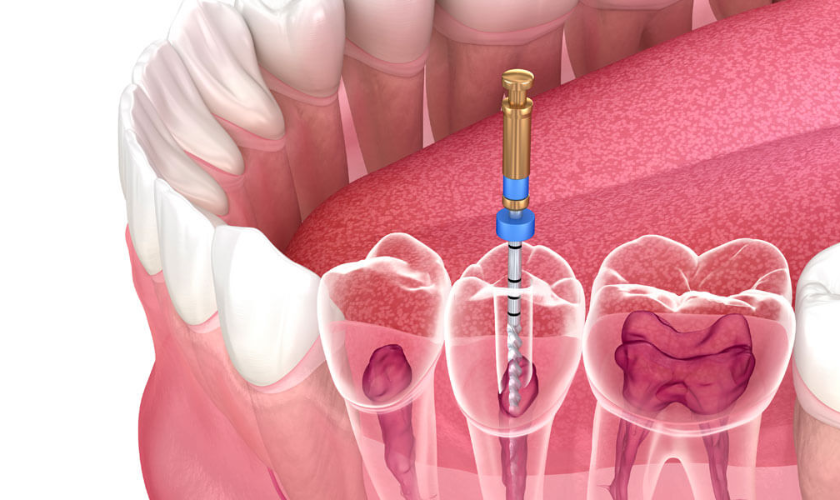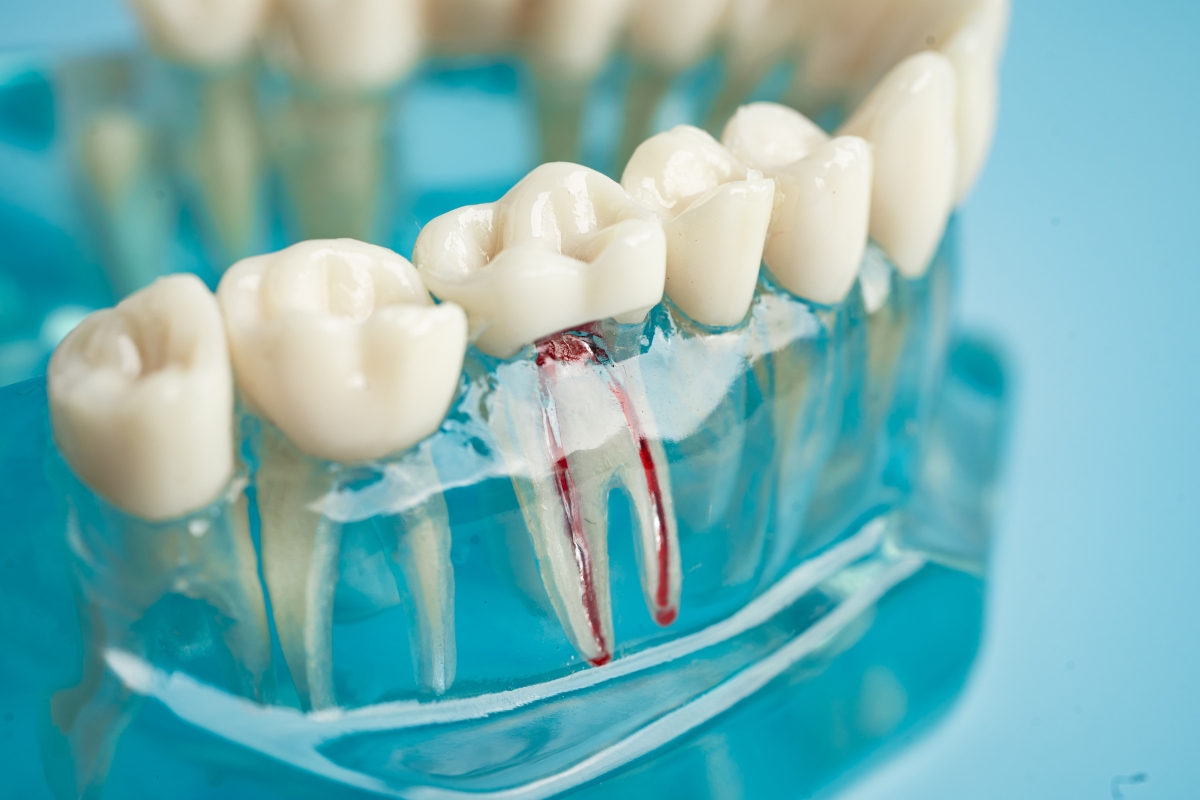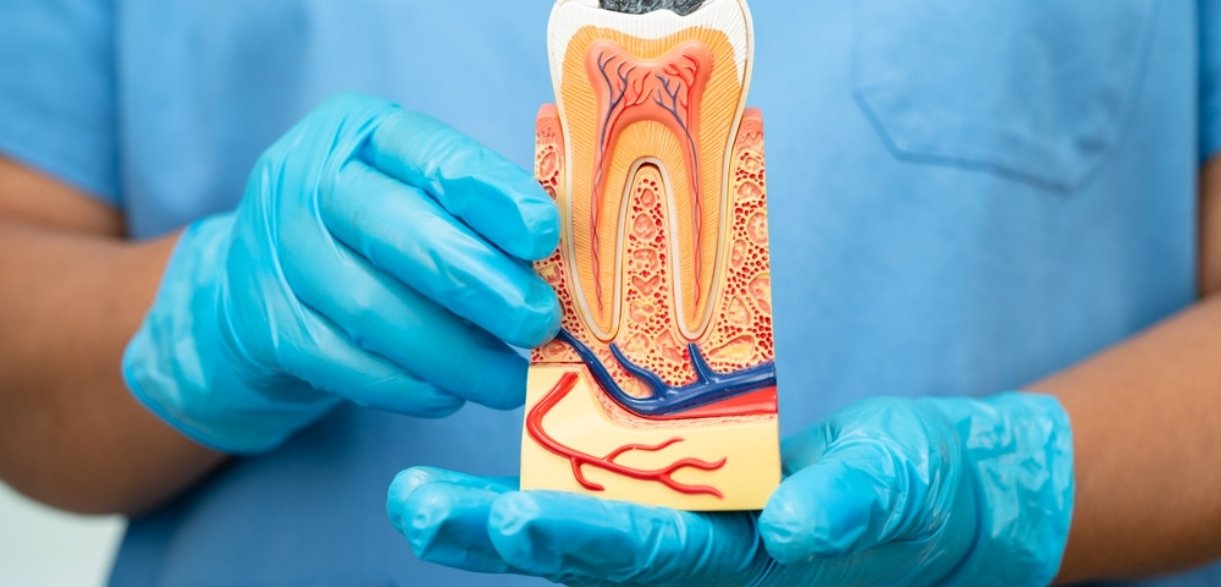Pay Online
Why Is Good Oral Hygiene Crucial for Healing After a Root Canal?

A root canal procedure can be a lifesaver for a tooth ravaged by infection or severe decay. It removes the inflamed pulp, cleans the canals, and seals the tooth to prevent further issues. But the battle for a healthy smile doesn’t end there. Proper oral hygiene after a root canal is just as important as the procedure itself for a successful recovery and long-term success of the treated tooth. Let’s delve into the fascinating world of root canal aftercare and explore why good oral hygiene is the secret weapon for a pain-free and healthy future for your smile.
Understanding the Importance of Oral Hygiene After a Root Canal
Following a root canal, where the dentist Greeley removes infected pulp to eliminate pain and prevent further infection, meticulous oral hygiene becomes even more critical. Here’s why:
Preventing Reinfection
Our mouths are teeming with bacteria, constantly forming a sticky film called plaque. This plaque harbors harmful bacteria that can infiltrate even the smallest openings. After a root canal, the treated tooth may have microscopic channels or gaps around the filling. Brush twice daily with fluoride toothpaste and floss once a day to dislodge and remove plaque. It helps in preventing bacteria from colonizing the treated tooth and causing a new infection.
Promoting Healing
Just like any wound, the area around the treated tooth needs a clean environment to heal effectively. Food debris left behind can harbor bacteria and hinder the healing process. Brushing and flossing remove food particles and bacteria, allowing the tissues to heal properly. Also, it reduces the risk of post-operative complications like inflammation or delayed healing.
Brushing and Flossing Your Way to Recovery: Essential Oral Hygiene Tips
Brushing
Soft Touch: Use a soft-bristled toothbrush specifically designed for sensitive teeth. This will gently remove plaque and debris without irritating the treated area.
Twice a Day, Gentle Does It: Brush for two minutes twice a day, using a gentle circular motion. Be especially careful around the treated tooth, avoiding harsh scrubbing or excessive pressure that could dislodge a temporary filling.
Angled Approach: For better cleaning around the treated tooth, consider using an angled toothbrush. It allows you to reach those hard-to-get-to areas more effectively.
Flossing
Flossing Powerhouse: Flossing daily is non-negotiable! It removes plaque and food particles from between your teeth, where brushing can’t reach. This is especially important for the treated tooth, as bacteria love to hide in those tight spaces.
Flossing Finesse: Use a gentle flossing technique to avoid irritating the gums—Floss carefully between the treated tooth and its neighbors, removing any trapped food debris.
Antiseptic Mouthwash
Targeted Cleaning: Consider incorporating an antiseptic mouthwash containing chlorhexidine gluconate into your routine for a short period after your root canal. This type of mouthwash has been shown to be particularly effective in reducing plaque and bacteria after dental procedures.
Not a Replacement: Remember, mouthwash is not a substitute for brushing and flossing. It can help reduce bacteria levels but cannot remove plaque and food particles as effectively.
Be Gentle
Chewing Caution: Your treated tooth might be a bit sensitive for a few days after the procedure. Be gentle with it during eating. Avoid chewing tough, hard, or sticky foods that could put pressure on the tooth.
Stick to Soft Options: Opt for softer foods like yogurt, mashed potatoes, or well-cooked vegetables until your dentist gives you the green light to resume normal chewing.
Warm Saltwater Rinses
Soothing Relief: Warm saltwater rinses can be a comforting and effective way to reduce inflammation and discomfort after a root canal. The warm water promotes healing, while the salt helps reduce swelling.
DIY Rinse: Mix half a teaspoon of table salt with warm water and gently swish for 30 seconds, two to three times a day. Avoid swallowing the rinse.
Follow Your Dentist’s Instructions
Your dentist is your ultimate resource for all things related to your oral health. After your root canal, they will provide specific instructions tailored to your situation. This might include details on how to care for your treated tooth, dietary restrictions, and medication recommendations. Be sure to follow their guidance carefully for optimal healing and long-term success.
Bonus Tip: Embrace a Healthy Diet
What you eat after a root canal plays a significant role in your recovery. By providing your body with the right nutrients, you can promote healing, minimize discomfort, and ensure a smooth recovery process. Here are some dietary tips to keep in mind:
Focus on Soft Foods for Comfort
Prioritize Soft Fruits and Vegetables: Opt for ripe fruits like bananas, mangoes, and pears. Steamed or boiled vegetables like carrots, spinach, and zucchini are easily digestible and provide essential vitamins and minerals.
Mashed Options are Your Friend: Mashed potatoes, sweet potatoes, and cauliflower are filling and provide complex carbohydrates for sustained energy.
Yogurt and Smoothies: Plain yogurt with a drizzle of honey or blended with fruits is a great source of calcium and protein. Smoothies are a fantastic way to incorporate various fruits, vegetables, and yogurt for a complete and refreshing meal replacement.
Scrambled Eggs and Soft Cheeses: Eggs are a powerhouse of protein, essential for tissue repair. Soft cheeses like ricotta or cottage cheese are easy to chew and provide calcium for bone health.
Gradually Reintroduce Variety
Start with Cooked Vegetables: As your tooth heals and feels less sensitive, introduce cooked vegetables like broccoli, peas, and green beans. These provide essential fiber and vitamins for overall health.
Progress to Softer Meats: Shredded chicken, fish, and ground turkey are excellent sources of protein. Also, they can easily be incorporated into soups, stews, or mixed with mashed potatoes.
Grains for Energy: Opt for soft whole-wheat bread, cooked pasta, or quinoa. These complex carbohydrates provide sustained energy to aid your body’s healing process.
Limit Sugary and Acidic Foods
Minimize Sugary Drinks and Candies: Sugary drinks and candies can create an acidic environment in your mouth. It potentially irritates the treated tooth and creates complications. Opt for water or unsweetened herbal teas instead.
Go Easy on Citrus Fruits: While fruits are beneficial, be mindful of citrus fruits like oranges and grapefruits, which are highly acidic.
Stay Hydrated: Drink plenty of water throughout the day to aid healing and prevent dehydration, which can worsen discomfort.
Maintain Good Oral Hygiene: Continue to brush gently with a soft-bristled toothbrush and floss carefully around the treated tooth to prevent infection.
Manage Pain with Over-the-counter Medication: If you experience discomfort, use over-the-counter pain relievers as recommended by your dentist.
Following a root canal, good oral hygiene is not just about maintaining freshness; it’s about safeguarding your investment in a healthy smile. By brushing and flossing diligently, you’re actively contributing to a smooth recovery, minimizing the risk of complications, and ensuring the long-term success of your root canal treatment. Remember, a little effort and a bit of care go a long way in keeping your smile happy and healthy!




